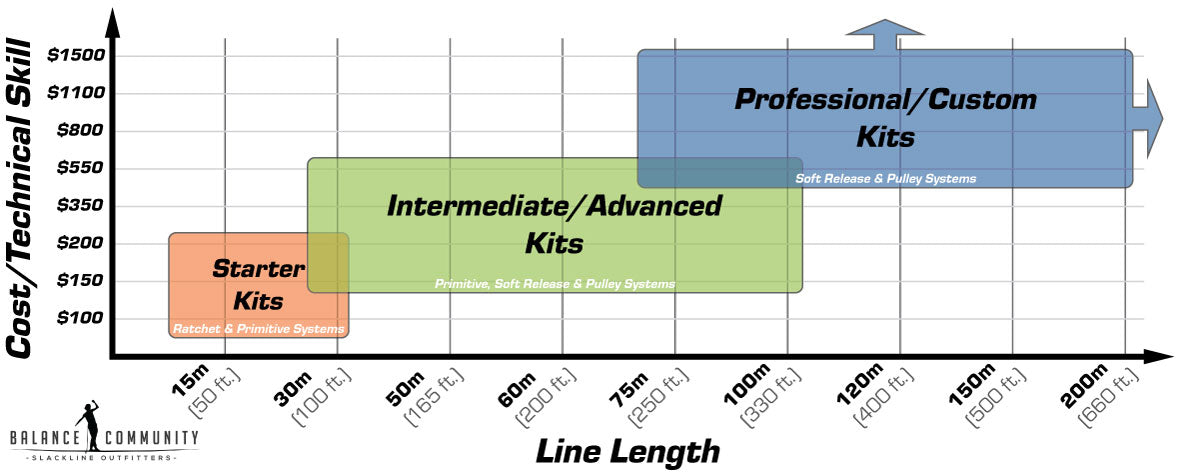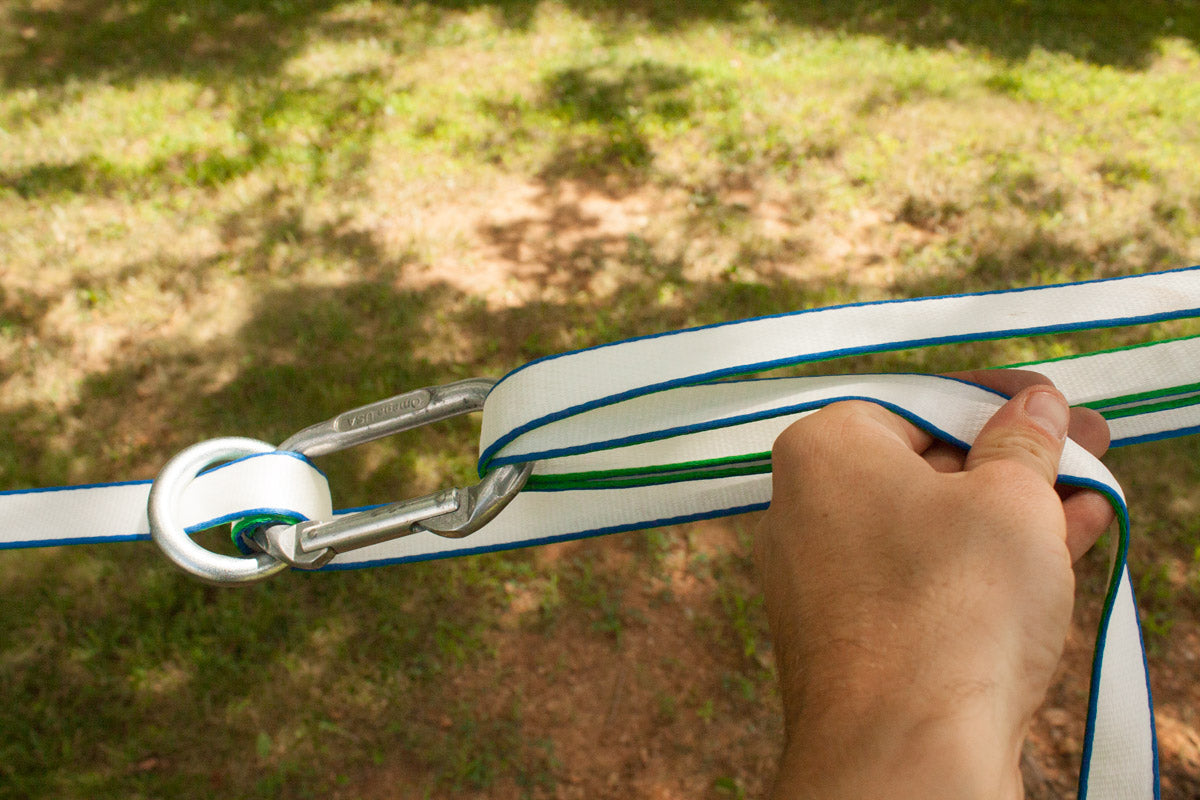You have no items in your shopping cart.
0
You have no items in your shopping cart.
Overwhelmed with all the options for the different slackline kits? Well, this guide is here to help you cypher through all that's available and choose the right kit for your needs. We will be covering a few different things to consider when looking for a new slackline kit and what specific things you should be looking for.
The first and most important thing to consider when purchasing a slackline kit is to know your desired use. Are you looking for a kit as a first time slackliner? Or maybe you are a seasoned slackliner looking for a kit that you can travel with? Or perhaps you have mastered your current kit and want to step up to the next level? There are kits that cater to all of these needs.
Here are a number of uses that we cater our kits to:

The second thing to consider when looking at slackline kits is how long of a line you can setup with the included equipment. When you first start slacklining, it's best to start with a very short line low to the ground. This allows a faster learning curve and will help you progress considerably in a short amount of time. It's also important to allow yourself room to grow into the kit you purchase. One of the worst things is that you buy a new kit, setup the full length, then master it within the first week and already need to look at an upgrade.
Consider these things when looking at the length of your kit:
We offer a number of kit styles that range in length possibilities. Use the graph or list below to determine which kit is right for the length line you are looking to setup:

Every slackline needs to be tensioned somehow (except rodeo lines). The different kits offer a number of different tensioning system styles, some of which are more complicated than others. The style you choose greatly depends on the previous two considerations (intended use and line length), but is also important in it's own right.
These are the styles of tensioning systems available and their pros and cons:
Although we don't currently offer any ratchet style tensioning systems, there are a vast number of this style of kit on the market.
Pros:
Cons:
A primitive system (sometimes called an Ellington System) is a simple pulley system made from a piece of webbing. Sometimes this is built using the same webbing that you are walking on (like the BC Primitive Slackline Kit) and other times it has it's own strap (such as the BC Primitive PRO Slackline Kit).
A soft release system uses a separate piece of webbing wrapped between your walking line and the anchor to be used as both the tensioning and release system.
Pros:
Cons:
A pulley system uses a series of pulleys in a number of configurations to achieve high levels of mechanical advantage.
Pros:
Cons:
No matter what style of tensioning system you go with, there are always pros and cons. Consider each of the above when choosing your slackline kit to ensure you are getting the system that best fits your needs.
These are the basic things you should for when purchasing a slackline kit for yourself. If you have any questions about any of the above, feel free to leave a comment below of Contact Us and we will be happy to help.
| Product | Price | Quantity | Options | |||||
|---|---|---|---|---|---|---|---|---|
| Features |
| Availability: |
| Price |
| Options |
| Actions |






← Older Post Newer Post →
0 comments